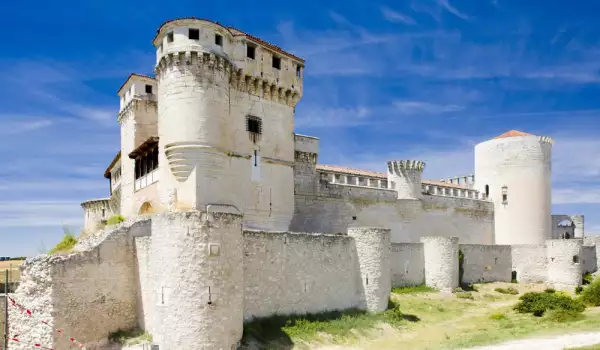Cuéllar Castle - Albuquerque Castle

Cuéllar Castle is known as the castle of Princes Albuquerque or Albuquerque Castle. It is a great historical monument and symbol of the Spanish town of Cuellar, which is located in the province of Segovia. Because of its priceless historic castle, Cuéllar was named by the Spanish government as part of the cultural attractions in the country.
Cuéllar Castle is located in the so called citadel, which dominates the highest part of the Cuellar town. The architecture of Cuéllar is an incredible mix of styles which has left a profound imprint on the facade and its interior of style between the 13th century and 18th century. However, most palpable is the Gothic and Renaissance architectural style.

The history of the Cuéllar Castle began as a military fortress, and in the 16th century it was transformed into a great palace. The early fortress was misappropriated by Henry IV of his sister Elizabeth, who was a successor under the will of her father - John II.
Shortly afterwards Henry IV gave the fortress Cuéllar of Don Beltrán de la Cueva, who was the first Duke of Albuquerque. Namely, he began converting the indigenous construction of a fortress into a beautiful palace. The castle was finished in the Renaissance style in the 16th century.
During these centuries the Cuéllar Castle was renowned for its rich decor, lavish furniture and relics. The rooms of the palace were distinguished by luxury, having been decorated with valuable paintings and artwork by famous artists. Many tapestries were hung on the walls of the rooms in Cuéllar, and the palace homed only gold and silver. It is believed that the castle then owned the largest and most diverse collection of weapons. Unfortunately this was all plundered during the wars of independence.
Cuéllar Castle has a rectangular shape and is surrounded by three cylindrical towers. In the southwestern part it has a beautiful square. Today, the historic monument was completely restored and is used for tourist purposes. Cuéllar is still owned by the Albakarki family, but also were given the rights to operate the Spanish Ministry of Education, Culture and Sport.















